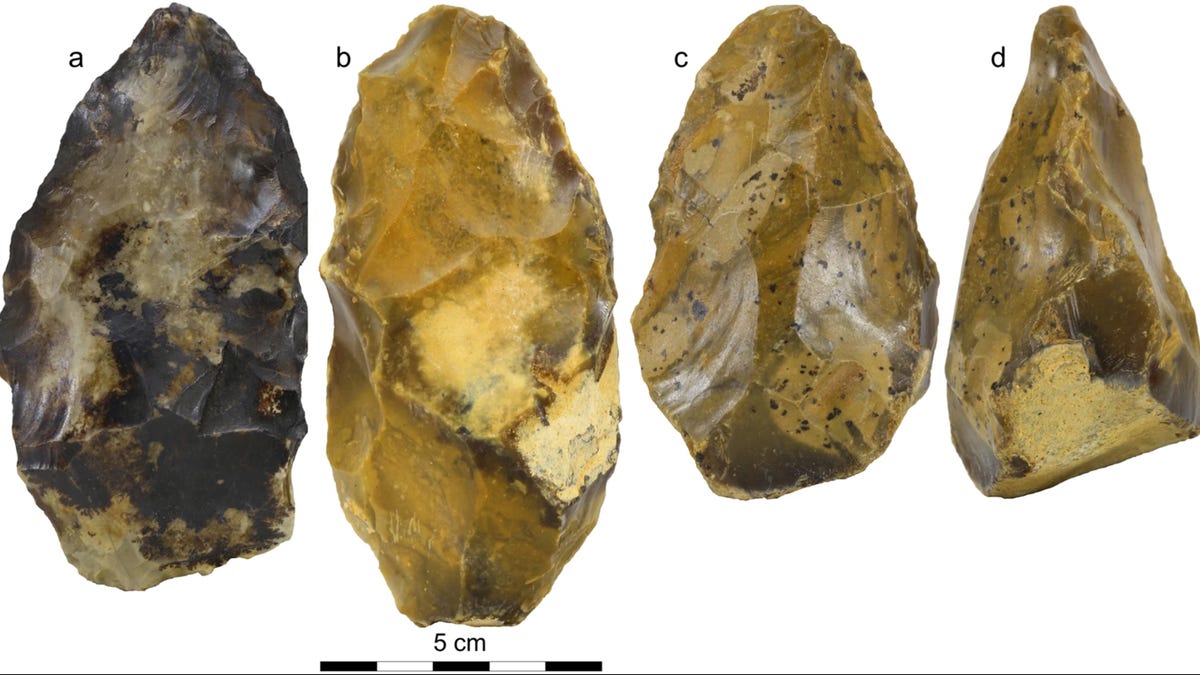France was inhabited 150,000 years earlier than we thought
A team of scientists says the dating of 260 flint tools and other artifacts means previous estimates get the ax.

Three of the hand axes discovered during the archaeological excavation at Moulin Quignon. Images C and D are the facial and lateral views of the same hand ax.
About 30 meters above the current valley of the river Somme at Moulin Quignon, scientists have uncovered 260 flint objects in the sandy alluvial deposits. These provide evidence of human occupation in northern France 150,000 years earlier than was previously known.
The objects, which include five hand axes, date from 650,000 to 670,000 years ago. They were unearthed courtesy of a team of scientists from the French National Centre for Scientific Research and the Musée National d'Histoire Naturelle, according to a Friday release from the Centre.
The objects "contribute to bridging the gap between France and England and help us to revise our definition of the earliest occupation of Northwest Europe by Homo heidelbergensis," the team concluded in its Sept. 11 article in Scientific Reports.
"Our results confirm the age of the earliest well-controlled bifacial (hand ax) technology both in the North and South of Europe."
The scientists said the findings also indicate a new understanding of early humanity's northern movement through Europe, confirming it to be much earlier than previously thought, and not limited to interglacial periods.

